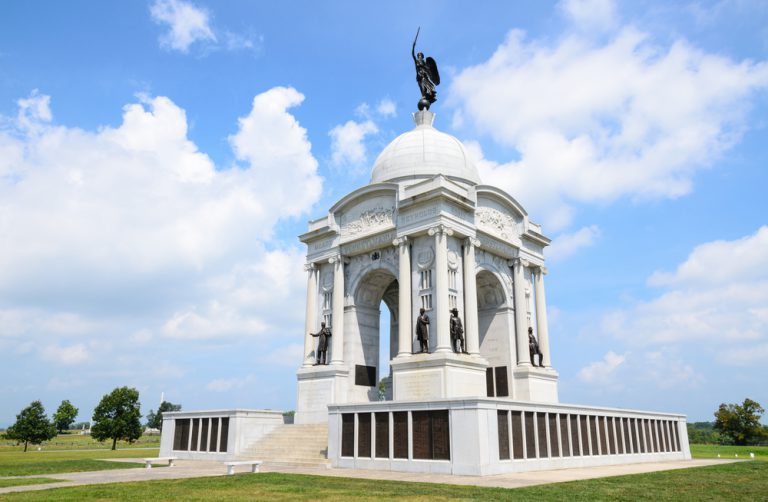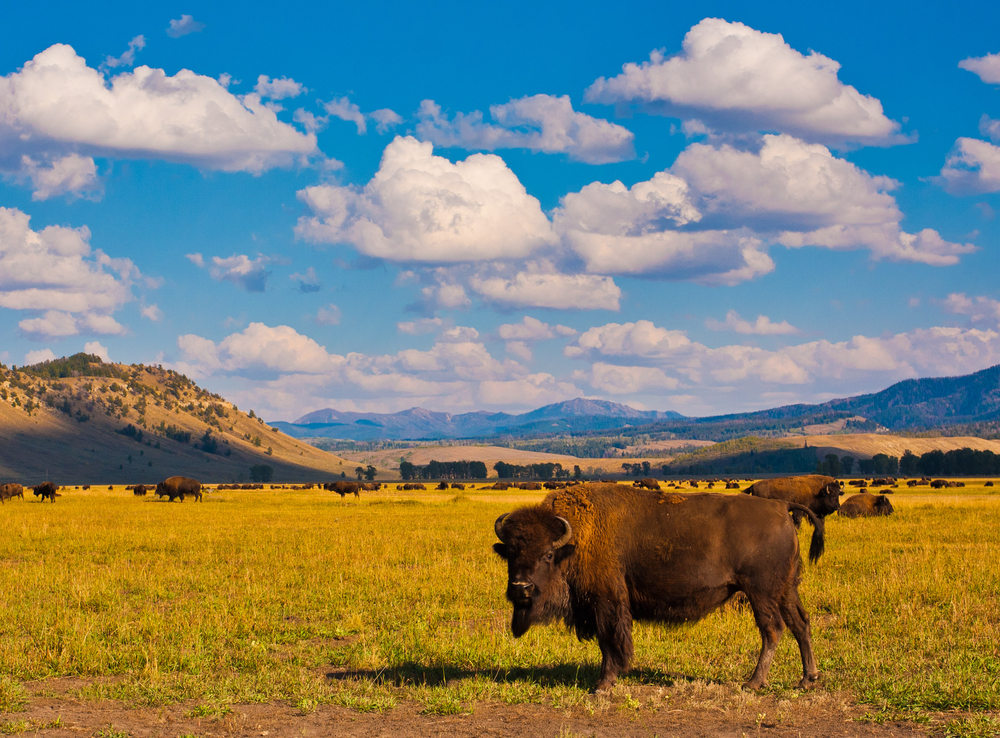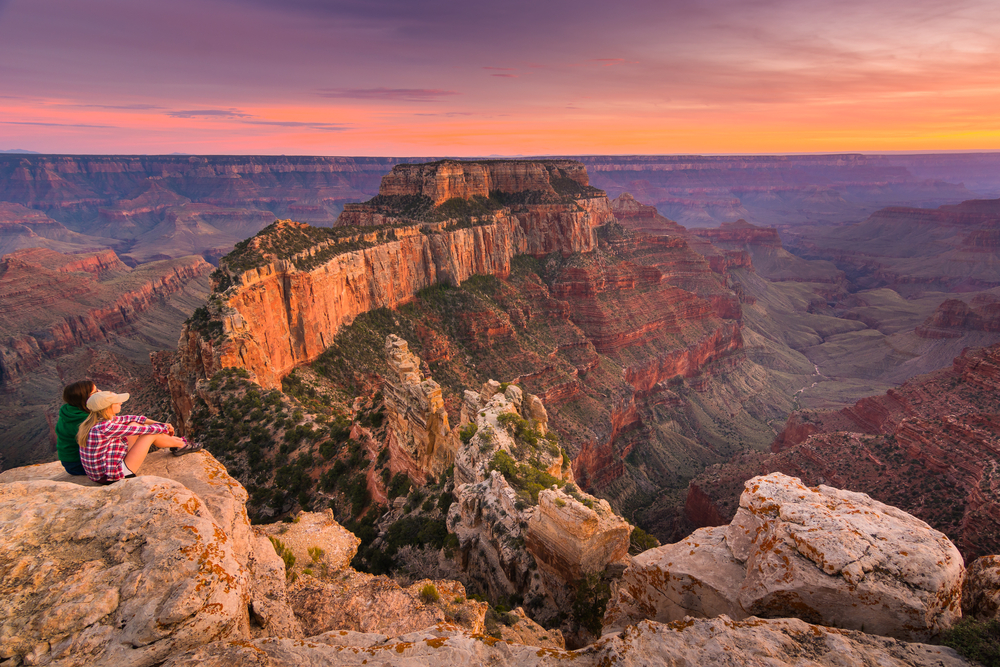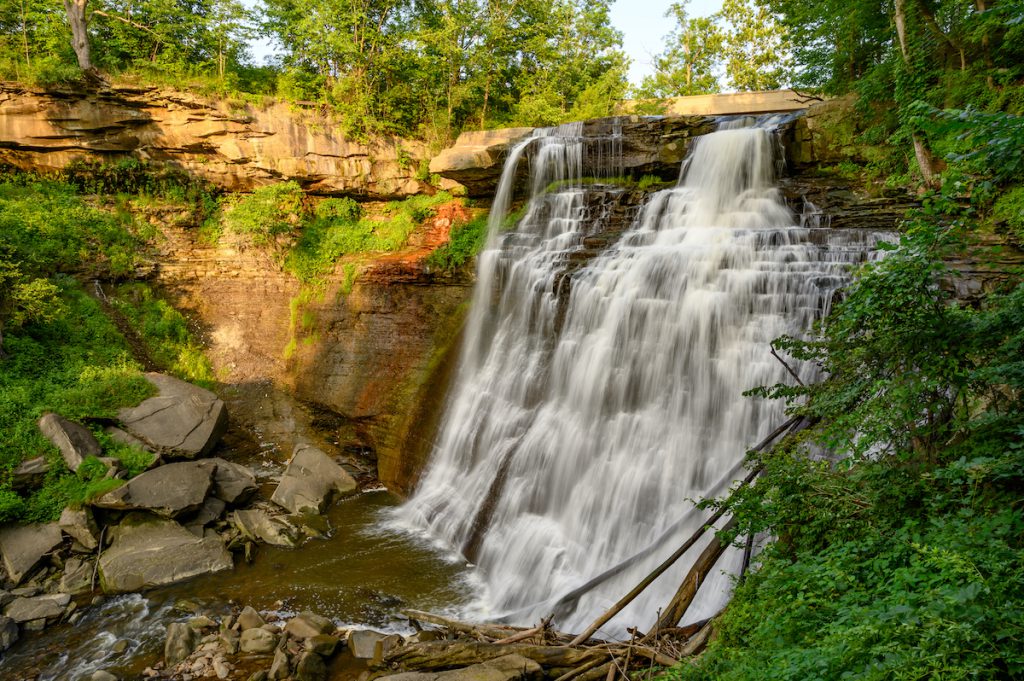
The national parks of the United States are some of the best things about our country. Everyone deserves to explore and enjoy these amazing places, but some of the people who deserve it most are the past and present members of our military.
These people work hard and sacrifice a lot for our country. The least we can do is offer them an escape into the natural beauty of the nation to which they’ve dedicated their lives. Fortunately, the NPS recognizes this. They’re trying to make sure veterans and active duty military members receive the special treatment they deserve when visiting the national parks.
They do this in a variety of ways, including free admission and special programs. Let’s take a look at the benefits the National Parks System has for US military members and their families.
Free Passes and Special Dates
One of the questions many people ask is, “Are there military discounts at national parks?” The answer? Yes!
Free Passes
First, let’s discuss annual passes. As of Veterans Day 2020, veterans and Gold Star familiescan visit all national parks and other federal lands for free every day. The National Park Service says the free access program is a way to thank veterans and Gold Star families for their sacrifices. Program members get free day-use admission to all NPS sites, as well as lands run by the US Fish and Wildlife Service, US Forest Service, Bureau of Land Management, Bureau of Reclamation, and US Army Corps of Engineers for the year. The entrance fee is waived for everyone who qualifies, but it does not include extra fees like camping, transportation, special recreation permits, or special tours.
The benefits can be used by the passholder along with the people in their vehicle. In parks that charge admission per person, the pass will cover the passholder and 3 additional adults. The pass cannot be used without the named passholder present.
Gold Star Families are the next of kin of a member of the United States Armed Forces who lost his or her life in a “qualifying situation,” such as a war, international terrorist attack, or military operation outside of the United States while serving with the United States Armed Forces.
Where to Go and What to Take
Wondering where to get national parks passes for military members? In order to receive this benefit, eligible individuals should head to the admission desk or station at any national park that charges entry fees, ask for the pass, and present proper identification.
Active duty military members will need one of the following:
- Common Access Card (CAC)
- Military ID (Form 1173)
For veterans, identification could be one of the following:
- Department of Defense Identification Card (CAC Card)
- Veteran Health Identification Card (VHIC)
- Veteran ID Card
- Veterans designation on a state-issued U.S. driver’s license or identification card
Gold Star Families must print a voucher that can then be presented in exchange for an annual pass. The voucher certifies that the signing family is eligible based on the criteria outlined here.
Other Passes
It should be noted that senior veterans and military members might be eligible for the Senior Pass, which costs $20 annually or $80 for a lifetime pass and comes with some additional benefits, such as camping discounts and discounts on other services.
Likewise, those veterans and military members with disabilities might look into the free Access Pass that gives these same additional benefits to permanently disabled individuals.
Read more about all NPS passes here.

Military in the National Parks
The history of the national parks and the U.S. military is interwoven. Since before the establishment of Yellowstone National Park in 1872, the military was helping to protect those beautiful lands. The U.S. Cavalry continued to protect the early parks and even acted as the first park rangers until the creation of the National Park Service in 1916.
In the 1930s, many battlefields and historic military sites that were previously managed by the War Department were incorporated into the National Park Service. Some of the parks were also used for both training and the care of military personnel during World War II. The NPS website has all sorts of interesting articles and information on the history of the military in U.S. national parks if you’d like to learn more.
Today, the National Park Service maintains dozens of sites that have connections to the military. If you’re looking to learn more about U.S. military history, you can visit battlefields, national cemeteries, forts, Cold War sites, and memorials for those who sacrificed their lives to protect this country. Many of the parks can also be used for military ceremonies, milestones, or oath renewals.
Special Dates
In addition to the free passes mentioned above, there are a few days a year when NPS admission fees are waived for everyone. These days include MLK Day, the first day of National Park Week, the anniversary of the Great American Outdoors Act, National Public Lands Day, and Veterans Day. You can find the specific dates here.
Health Benefits
It’s no secret that spending time outdoors offers some incredible health benefits. Considering the intense physical, mental, and emotional toll that military life can have on someone, a peaceful retreat into nature can do wonders.
Because spending time in the national parks can be so good for the health of military members and veterans, the NPS has made a point of offering special healing activities for them. These include therapeutic horseback riding, the Vets of the River program, and more.
Check out stories of these healing times in nature here. You can also create your own healing experience by planning a peaceful and relaxing hike or kayaking trip of your own.
Ceremonies and Memorials
In addition to offering a peaceful retreat for healing, the national parks can also be wonderful places for ceremonies and memorials. For this reason, there are often military events at national parks. Usually, these are oath ceremonies that individual military members choose to carry out in the beauty of a national park.
If you want to hold a military ceremony in a national park, contact the park in question to find out what you’ll need to do to make it happen.

Which national park should I visit?
Part of the beauty of the United States is that there are so many amazing national parks and public lands to visit, with varied landscapes and history. Many national parks, monuments, and other designated areas also have connections to the military. If you or your fellow travelers want to learn more about the military history of the United States, there are frontier forts, Cold War sites, battlefields, national cemeteries, and memorials commemorating the great sacrifices made by so many to protect this country.
West Coast National Parks
If you’re headed to the West Coast, you’ll find a variety of landscapes and terrain and a variety of parks that let you appreciate that scenery.
1.) Yosemite National Park
One of the most popular national parks on the West Coast is Yosemite, and with its sheer cliffs, rushing waterfalls, ancient sequoias, and backcountry wilderness, it’s not hard to see why! Half Dome and Yosemite Falls are showstopping sights, and both are easy to see from several vantage points throughout the park. You can also visit one (or all!) of the three groves of giant sequoias.
There are activities at Yosemite year-round, with hiking, climbing, and swimming available in the summer, and snowshoeing, sledding, or downhill skiing at a small resort in winter. The fall also showcases beautiful autumn foliage, and spring brings wildflowers to many of the park’s meadows.
If you do want to explore Yosemite in an RV rental, there are numerous campgrounds in Yosemite, and many more private campgrounds nearby.

2.) Death Valley National Park
If you want a stark contrast to Yosemite’s mountains, rivers, and lush green meadows, Death Valley National Park has a stark desert beauty that is impressive in a completely different way. While most people may think of brown desert sand, Death Valley is a riot of color with reds, blues, purples, oranges, and greens in the rocks and mountains of the area. In spring, multi-colored wildflowers also lend a bright beauty to the desertscape.
There are several campgrounds inside Death Valley, and in the surrounding areas as well.
3.) Grand Canyon National Park
One of the most iconic national parks, the Grand Canyon, has something for everyone to do! If you’re a good hiker, you can trek to the bottom of the canyon and back out again. Those who don’t want to undertake such a strenuous journey can walk along the top of the canyon in many spots, or take a mule trip part or all the way to the bottom. You can learn about the history of the park and the people who lived there at one of the visitor centers along the rim.
There are several campgrounds at the South Rim of the park and a smaller selection at the North Rim. There are also private campgrounds in many spots nearby.
4.) Rocky Mountain National Park
Spend some time in the Rocky Mountains at the park named for the range. Weather at the park can change quickly, and parts of it close in the winter, but there are many things to do in the warmer months of May through October and there is snowshoeing, sledding, and more to do in winter. There are also quaint mountain towns on both sides of the park, so you can spend plenty of time exploring the area.
You can camp at many places inside the park, or in the nearby towns of Estes Park to the east or Grand Lake to the west as well.

Midwest National Parks
The Midwest has several national parks as well, with sweeping prairie views or a variety of lakes to explore!
5.) Badlands National Park
The alien-looking landscape of Badlands includes buttes and pinnacles that make perfect homes for bighorn sheep, prairie dogs, and bison. Badlands National Park is also just a short drive from the Black Hills National Forest and is about a ninety-minute drive from Mount Rushmore.
You can camp in the Badlands National Park at two different campgrounds, and there are private campgrounds just outside the park as well.
6.) Voyageurs National Park
Over 40% of this Minnesota park is water, which means you can actually arrive at the park via RV, car, or even boat. The park has amazing forests, waterways, and a multitude of lakes, along with over 27 miles of hiking trails. Visitors can also kayak, boat, swim, ice fish, snowshoe, cross-country ski, and more.
There are several communities near the park, so if you don’t want to stay at one of the park’s five campgrounds, you have other options as well.
7.) Cuyahoga National Park
Ohio’s only national park features the state’s tallest waterfall – Brandywine Falls. The park is along the Cuyahoga River between Cleveland and Akron and is home to lush forests, picturesque rolling hills, ravines, wetlands, and rivers. The park is one of the most visited in the United States.
There are six campgrounds in the park itself, and there are plenty of private campgrounds just outside the park’s boundaries as well.

East Coast National Parks
From the peaks at Acadia to the wide ocean expanse of the Florida Keys, the East Coast has a variety of scenery and exciting things to do at national parks!
8.) Acadia National Park
This Maine park is the oldest national park east of the Mississippi and has amazing views of mountain peaks, ocean shores, lakes, and forests. The 16 stone bridges in the park provide quaint scenery, and there are many small towns and villages nearby that lend to the charm of the area. You can bird watch, hike, swim, fish, and so much more.
You can camp at one of three campgrounds at Acadia National Park, or at one of many private campgrounds nearby.
9.) Everglades National Park
The Everglades are the largest tropical wilderness in the country and are home to manatees, American crocodiles, and Florida panthers. Visitors enjoy boating, backcountry camping, birdwatching, and more. The park is also known for its airboat tours to see the swamps and learn more about the ecosystem of the park.
There are two campgrounds inside the park where you can stay on an RV road trip, and there are many more private campgrounds outside the park’s boundaries.
10.) Dry Tortugas National Park
Dry Tortugas National Park is only accessible by boat or seaplane, but its location at the very end of the Florida Keys guarantees that a stay nearby will be peaceful and tranquil and a great escape from the hustle and bustle. The park is made up of seven islands and their coral reefs, and houses a 19-century fortress, a lighthouse, and a huge population of sea turtles. Visitors can boat, paddle, fish, swim, and enjoy breathtaking snorkeling or SCUBA-diving. There are also guided tours of Fort Jefferson and other ranger-led activities at the park.
There are no campgrounds at the park, but there are several privately-owned campgrounds in the Florida Keys with beautiful views of the turquoise ocean and the vast sky above. The remote area also makes for some stellar stargazing at night when darkness falls.
There are so many national parks and other federal lands to explore! You can find guides to all of the country’s national parks here, with ideas for activities, nearby campgrounds, places to eat, and so much more to help you plan your trip.
You can definitely take advantage of your pass to visit the national parks closest to your home. However, if you want to rent an RV and head out on a road adventure, you have a lot of options!






